Shaft & Grip Reviews
Review: Basileus Fiamma shaft
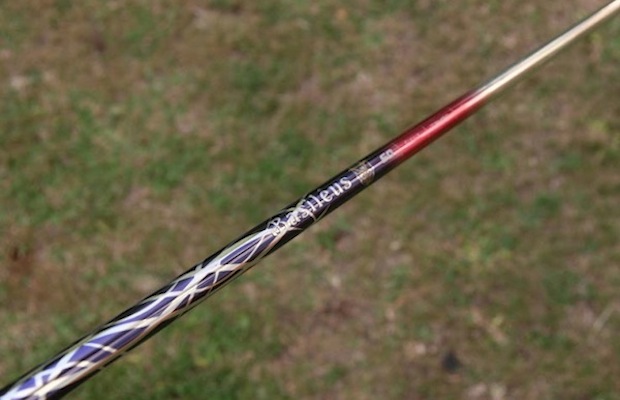
Cons: Due to the precise design utilizing high quality materials, the shafts come with a hefty price tag of $473, which is more than most drivers and outside of many consumer’s budget.
Bottom Line: Basileus has produced an extremely smooth, exotic-looking shaft that will improve the driving games of golfers who can afford to game them.
Overview
The process of producing a Basileus shaft started out with the vision of creating shafts that the company could proudly deliver to its customers that were customized for each individual. To achieve this, Basileus created a matrix they call an A-B Map that was derived from the analysis of data from thousands of shafts using its proprietary EI Curve distribution method of shaft analysis. Each shaft Basileus makes fits in the matrix, which makes finding a profile easier to find for the player.

Basilius shafts are made from the high modulus carbon materials from Japan, designed in-house in and manufactured in Japan. All visual aesthetics are also decided in Japan and painting is performed in Japan using special technologies and quality controls.
In short, Basileus has seen an increasing trend by shaft manufacturers towards cost cutting and they feel that fewer of its competitors shafts truly meet the objectives, wants and needs of the player. Even the common message communicating the products sales pitch of “Hit the ball farther” without actually providing any real solution to the users needs had to be addressed.
Through design, calculations and countless trial and error, Basileus feels they have perfected its shafts and identified the crucial bits of data that can help users understand the objective characteristics of its shafts and choose the ideal shaft for their style of play.
According to the website, the Fiamma shaft, which is said to have a calculated flex in the tip-end that helps to provide extra distance, also includes “a relatively more pliant tip allows for better ball engagement. A rigid mid-section gives the Fiamma a solid feel. Best suited for quicker swing tempos and compact backswings.”
Here were the club specifications for my review
Basileus Fiamma 60X
Flex/Gram: Extra Stiff /67.5 grams
Torque: 3.5
Length: 45.5 inches
CPM: 265
Swingweight: D3
Installed in a Miura SIT 460 Driver (9 degrees) at Aloha Golf Center, Basileus specialist in the State of Hawaii.
Performance
The Basileus Fiamma, according to its A-B shaft matrix, falls in the “A” quadrant. It has a softer tip and is stiffer towards the middle and butt section. It’s designed for those with a smoother tempo and compact swing. The Fiamma shaft was also designed for a quick launch, a tight dispersion with a slight draw bias.
My initial testing thoughts were that the Fiamma felt so much softer than what I expected from the numerical CPM. Due to the initial feel, at first I thought I’d easily overpower the shaft once I began increase my swing speed. I quickly noticed during the range session that although the shaft felt soft, it kept up with my swing, even when I tried to max out my speed to test its performance.
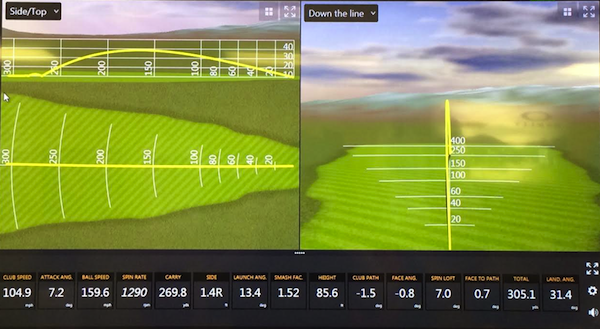
It wasn’t too soft, but rather extremely smooth. The softer tip section appeared to collect perfectly at impact no matter the strength of swing I put on the ball. The head squared up nicely with limited torque. The shaft had a different, elevated feel compared to other popular shafts that I’ve played in the past.
The trajectory of the Fiamma was a quick launch and penetrating flight. It reminded me much of the Graphite Design DI shaft in trajectory, but had a surprisingly smoother feel. Considering I’ve always appreciated Graphite Design shafts for years, finding something that felt smoother was astounding. Compared to the DI that I had been recently gaming, I saw a 100-to-200 rpm average spin reduction, a 1-to-2 degree higher launch and about 8-to-12 yards of total distance distance after switching shafts.
The Fiamma shaft provided mental confidence as well. My dispersion was extremely tight and accurate and I noticed I gained notable yards off the tee on the course that I play weekly.
I always hesitate to mention anything about yardage gains in shaft reviews because I feel when I personally read those statements that I’m reading a biased commercial rather than an honest review. In this instance, however, the Fiamma has amazed me quite often on the same course I’ve played regularly each Saturday for the past seven years. It’s helped take me to spots down the fairway that I’ve rarely hit from before, due mostly to the consistent performance of the shaft giving me confidence to go after the ball.
The shaft has not failed to keep up with an increased swing speed, with no delay in the transition. It kicks properly where I need it and matches well with my swing characteristics and tempo. Of course, this could be said of any custom fitted shaft, but the feel of this shaft reigns superior to others that I’ve been fitted into.
This is the fourth shaft that I’ve tried in my Miura SIT 460 head. Since I’ve been using the same driver head in my testing, that has taken out a variable when comparing shafts. Therefore, I know the performance improvements I have noticed are due to the variable change in shaft.
Looks and Feel
The Basileus shafts are undeniably eye-catching, flashy shafts. Basileus shafts feature tasteful graphics, dynamic colors and authentic silver plating, which most companies fail to use. The use of silver is probably not very cost effective or practical on a golf shaft, but Basileus believes that its shafts will play well and are works of art in themselves. Basileus spared no expense in developing and manufacturing its shafts.
The Fiamma shaft starts off purple at the butt, fades to pink in the middle and ends at chrome to the tip. Raised silver plating over the Basileus name, which begins after the tribal-like chrome graphics, emanate from the purple area. The whole package is arresting in its gleam. It’s truly an artful looking shaft and at the same time is a bit sinister in looks. With a $473 price tag, you expect to get more than just a solid shaft and the Fiamma doesn’t disappoint.
Its feel is something difficult to describe because, like a putter, shafts are personal. For me, as I wrote earlier, the Fiamma feels much softer than it actually plays. It’s a lively shaft in that there is no board-like feeling, yet it maintains playability and smoothness despite any swing speed increases. The Fiamma is consistent whether I’m attempting a bunt swing down a narrow fairway or when I’m swinging for the fences on a wide open par-5. It has the feel of a regular-flex shaft but plays like an extra-stiff and manages to keep up with swing speed increases despite its soft feel.
The Takeaway
Now available in America, The Fiamma will gain popularity for the Basileus brand due to its excellent design and performance characteristics. Its feel, high-quality materials and manufacturing process equates to one of the finest quality shafts available on the market.
Although the price is steep for an entry into a lesser known shaft company in America, I recommend Basileus as a strong option for a shaft fitting. Out of four popular shafts I’ve used previously, this is the best-performing and best-feeling shaft that I’ve put into my Miura FIT 460 driver.
- LIKE19
- LEGIT2
- WOW4
- LOL1
- IDHT3
- FLOP1
- OB1
- SHANK1
Equipment
Here’s why Jordan Spieth switched into a new Fujikura Ventus TR Blue shaft at Pebble Beach
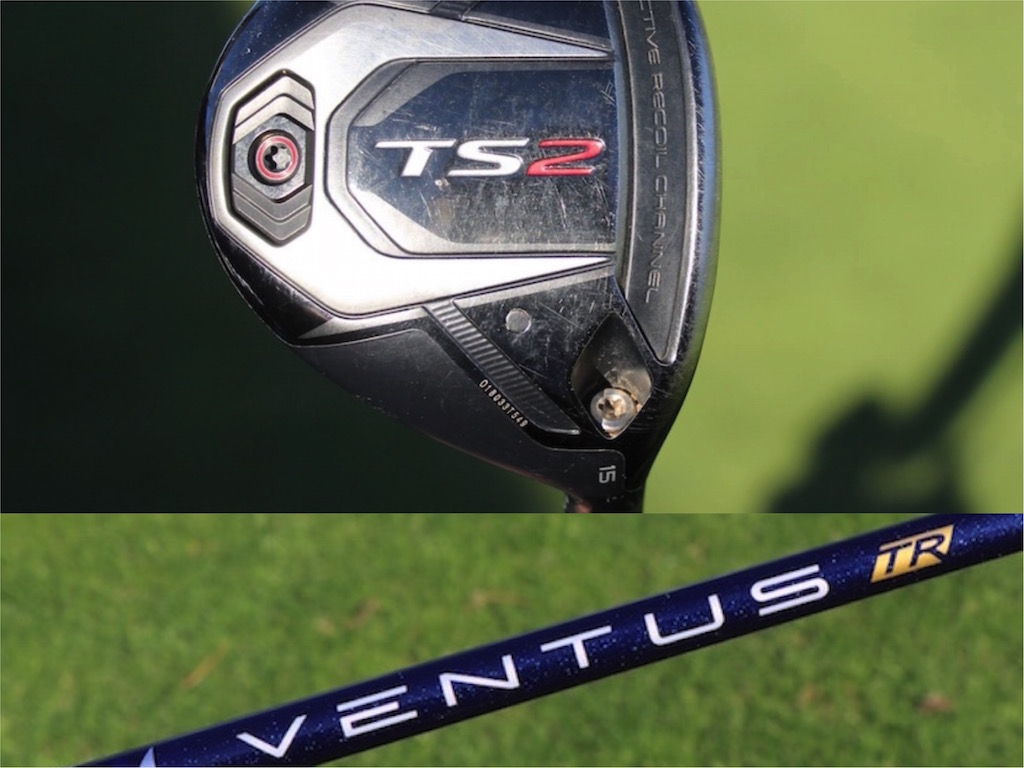
When Fujikura’s new Ventus TR Blue shaft launched in January 2022, we learned all about the updated construction and potential performance benefits compared to the original Ventus Blue. It was unclear at the time, however, exactly who would make the switch into the new TR design on the PGA Tour.
Well, we’re starting to get some answers.
Jordan Spieth, who’s been relatively slow to change into new products throughout his career, is among a handful of names making the change. Spieth conducted recent testing with a Ventus Blue TR 7 X shaft in his Titleist TS2 15-degree fairway wood, and he put it in play this week at the 2022 AT&T Pebble Beach Pro-Am.
Titleist Tour representative J.J. Van Wezenbeeck, who works closely with Spieth on his equipment, said that Spieth came to the Titleist Performance Institute (TPI) on Friday before the 2022 Pebble Beach Pro-Am for a check-up on his equipment. Since Spieth was previously playing Ventus Blue shafts in his Titleist metalwoods, he was intrigued by the new TR version.
As it turned out, Spieth found the new shaft to help with his transition and directional control.

“Coming from Ventus Blue, anytime they update a shaft you’re just intrigued on that, and he liked how [the Ventus TR Blue] loaded compared to the original Ventus Blue for him,” Van Wezenbeeck told GolfWRX on Tuesday. “He felt like when he mishit it, there was a little more control. So that was a good option for him…we did a little bit of internal work on the head to make sure there’s enough spin, because want to make sure his 3 wood doesn’t have too low of spin. He liked how the TR reacted on mishits where the spin didn’t drop, and it had more consistent spin from swing to swing.”
Due to a new Spread Tow fabric in the butt-end section, which is essentially a checkerboard pattern of woven material, the torque on the TR version is 10 percent stiffer in the mid-to-grip end of the shaft. As a result, Fujikura says the TR shaft is designed to improve stability and consistency compared to the original Ventus Blue.
Based on Spieth’s results with the TR shaft during testing, it seems Fujikura’s case holds water.
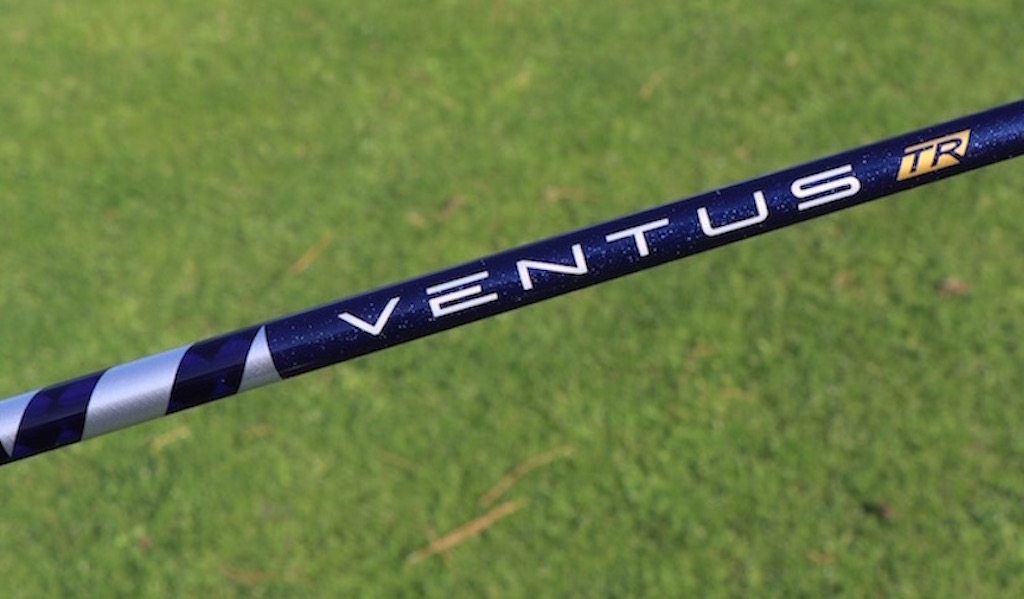
Spieth is using a Ventus Blue TR 7 X version in his fairway wood.
Pat McCoy, Director of Tour Operations at Fujikura, spoke with GolfWRX about the new shaft, and what players are seeing in their testing out on Tour.
“Compared to the original Ventus Blue, the TR has a stiffer mid-section and lower torque,” McCoy said. “Basically what the shaft does is it eliminates some of the dynamic loft. It eliminates some of the rotation. Obviously, the Ventus Blue was a very stable shaft and one of the best launching shafts we’ve ever had. And we just made it better.
“As far as ball speed and launch and spin, I’m not going to say it’s faster, but we have seen players who have achieved faster speeds with it. It provides more consistency and the ability to turn swing speed into ball speed better. And that’s it. It’s a little stiffer than the original Blue, and it’s a little bit weaker than the [Ventus Black]. It’s a ‘tweener. It gives you something in the middle, and depending upon loft and impact location, you get a better fit.”
The fairway wood shaft wasn’t the only potential change that Spieth will make in 2022, though.
In addition to putting the new Titleist Vokey SM9 wedges in the bag, Spieth is also considering adding another option to the top end of his bag.
Typically, Spieth changes between a hybrid and long irons, depending on course conditions. During the recent session at TPI, though, Spieth took a liking to Titleist’s U-505 wide-bodied driving iron. Ahead of the 2022 AT&T Pebble Beach Pro-Am, Spieth took a U-505 2-iron (Graphite Design AD-DI 105X shaft) out onto the course for testing.
“He’s experimenting with a U-505 this week (ahead of the event at Pebble Beach),” Van Wezenbeeck told GolfWRX. “He’s always gone between a hybrid and either a 2 iron, or a hybrid and 3 iron, and we brought out a 505 as kind of a third option on a week where he isn’t sure whether he should play an iron or a hybrid. The 505 being a wide body iron is kind of a blend between the two. And he was really intrigued with how high it launched on a standard shot, and he could flight it more off the tee, where as with a hybrid he can’t do.
“So on weeks he feels like there’s a lot of irons off the tee, he likes to play the iron. On weeks where there are a lot of shots into par 5s, he likes the hybrid. On weeks where there’s a little of both…he felt the 505 might be an option, so he was taking it on the golf course [on Tuesday] to see how it would react.”
While it’s unclear exactly when Spieth will break out the new U-505, it seems like it’ll certainly be in the rotation going forward. The Ventus TR Blue shaft, on the other hand, has already earned a starting spot in the bag this week.
These changes may seem minor to some, but it shows Spieth’s willingness to find small equipment tweaks to improve his game. For amateur golfers, use this as a lesson when gearing up for the new season. Go through your bag, test some of the new shaft and head options, and see where you can make improvements. Now is the perfect time to take inventory and get prepared.
- LIKE65
- LEGIT11
- WOW3
- LOL1
- IDHT0
- FLOP2
- OB0
- SHANK6
Shaft & Grip Reviews
MRC Shaft Shootout: Tensei CK Pro White, Kuro Kage XT and Diamana BF-Series
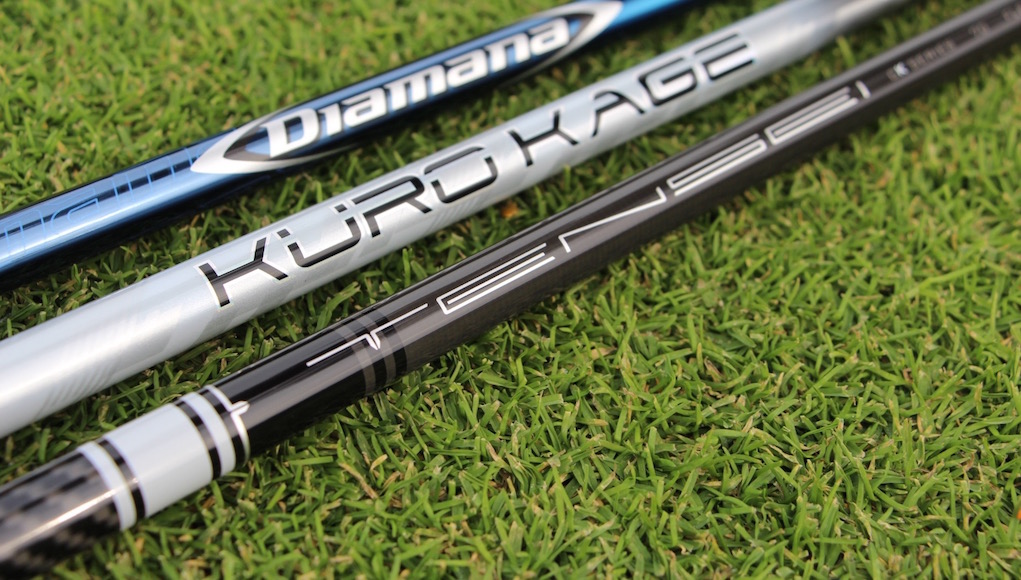
The Tensei CK Pro White is the latest release from Mitsubishi Rayon Composites (MRC), a low-launch, low-spin shaft with a multi-material design that the company says improves the performance and feel of the shaft. Whereas most golf shafts use between 3-6 different materials in their construction, the Tensei CK Pro White is made from 11 different materials, giving MRC engineers greater precision in the shaft’s design.
Like MRC’s Tensei CK Pro Blue shafts, which produce a slightly higher-launching, higher-spinning ball flight, the CK Pro White uses MRC’s Carbon Fiber DuPont Kevlar Weave in the handle section of the shaft. The company says it increases the strength and stability of that part of the shaft, leading to better feedback.
On the other end of the shaft, the tip section, MRC uses a boron-reinforced fiber. All low-launch, low-spin shafts have stiff-tip designs, but the addition of boron puts the Tensei CK Pro White in a class of its own when it comes to lowering launch angle and spin rate. The boron fiber also reduces torque, which can offer better energy transfer, more accuracy and better feedback — especially for skilled, high-swing-speed golfers.
Connecting and reinforcing those areas of the shafts is MRC’s low-resin content (LRC) prepreg. Prepreg is carbon fiber that’s been reinforced or “pre-impregnated” with resin, a glue that holds the material together when it’s formed into sheets and rolled into the form of a shaft. MRC says that its LRC has 15 percent more carbon fiber and 13 percent less resin than traditional prepregs, which allows MRC to make the Tensei CK Pro White stronger without adding extra weight to the shaft. MRC also uses high-modulus, 40-ton prepreg in the Tensei CK Pro White’s design, which like LRC is thinner, stronger and lighter than traditional prepregs.
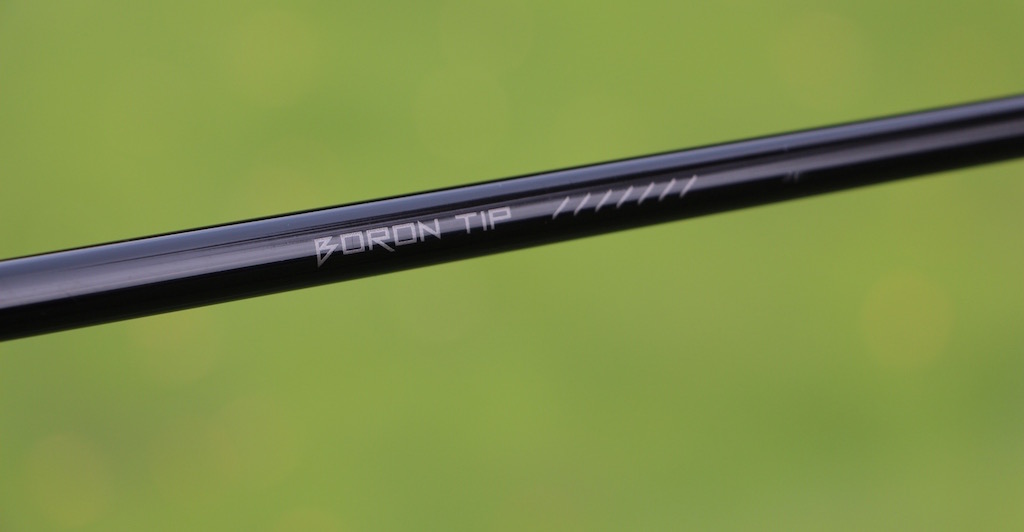
The addition of boron helps MRC make the tip of Tensei CK Pro White shaft stiffer and lower in torque.
In the EI chart below, you can see how the Tensei CK Pro White’s bend profile compares to the CK Pro Blue. The main differences are its slightly stiffer tip and mid sections, as well as its slightly softer butt section. That gives the CK Pro White a higher “kick point” than the CK Pro Blue. Generally, the higher the kick point of a shaft, the lower its launch conditions. That’s why the Tensei CK Pro White is a lower-launching, lower-spinning shaft than the Tensei CK Pro Blue.
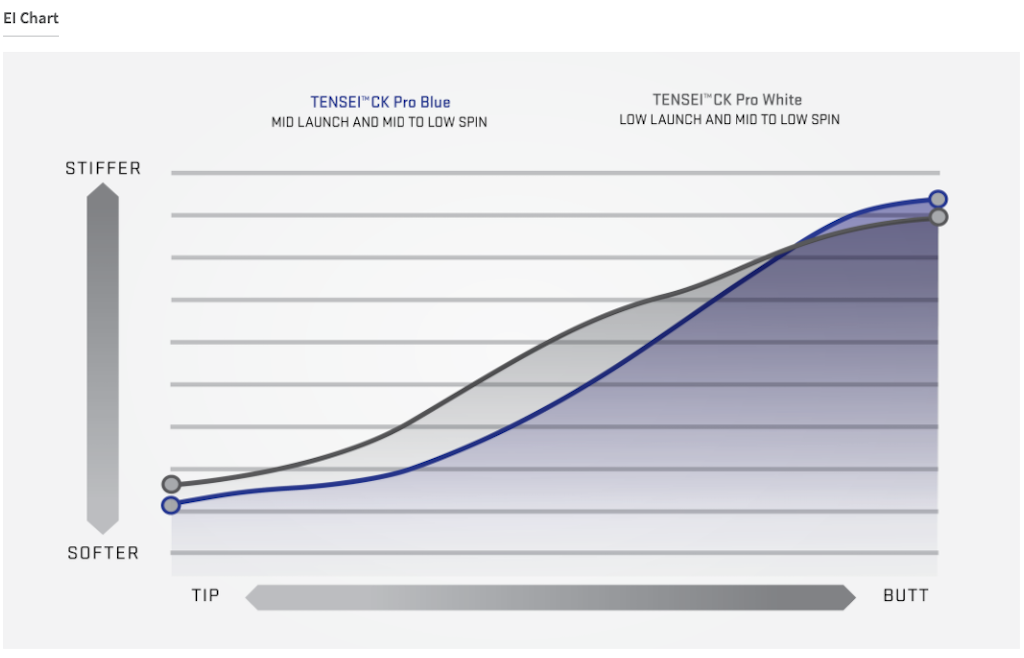 The Shootout
The Shootout
Just how much lower launching and lower spinning is the Tensei CK Pro White than MRC’s latest premium driver shafts? I put it to the test against the company’s Kuro Kage XT and Diamana BF-Series, which like the CK Pro White are PGA Tour-quality shafts that sell for about $400 each. All three shafts tested were built to my spec: 70TX, tipped 1 inch at a finished length of 45.5 inches.
I tested the three shafts on Trackman 4 at the Launch Pad at Carl’s Golfland in Bloomfield Hills, Mich. After warming up, I hit 10 drives with each shaft, and whittled my shots down to the most similar five to help illustrate the differences. Premium balls were used for the test, and results were normalized.
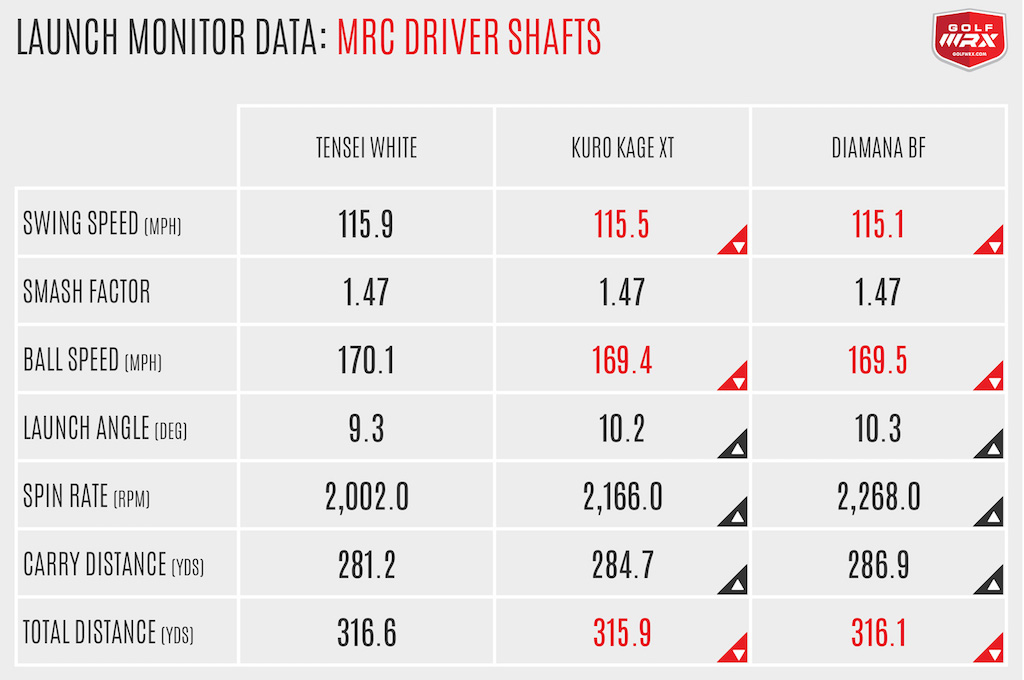 As expected, the Tensei CK Pro White was the lowest-launching, lowest-spinning shaft in the test. That’s impressive in its own right, but what will really excite golfers when they try a Tensei CK Pro White is the shaft’s feel. It’s noticeably smoother than the MRC White Board shafts I’ve played in the past. You could likely duplicate the launch conditions of the Tensei CK Pro White with similar products from other premium shaft makers, but I’m not sure its smoothness can be replicated in the category. It’s something special, and I expect a lot of serious golfers with above average club head speeds will be willing to pay a premium for it.
As expected, the Tensei CK Pro White was the lowest-launching, lowest-spinning shaft in the test. That’s impressive in its own right, but what will really excite golfers when they try a Tensei CK Pro White is the shaft’s feel. It’s noticeably smoother than the MRC White Board shafts I’ve played in the past. You could likely duplicate the launch conditions of the Tensei CK Pro White with similar products from other premium shaft makers, but I’m not sure its smoothness can be replicated in the category. It’s something special, and I expect a lot of serious golfers with above average club head speeds will be willing to pay a premium for it.
MRC’s Kuro Kage XT uses a stouter iteration of the company’s famed “Blue Board” bend profile, and in that regard it’s quite similar to the Diamana BF-Series. That’s what makes the shafts a little higher launching and higher spinning than the Tensei CK Pro White. The Kuro Kage XT has a much different feel than both, however, due to its use of an elastic wire made of Titanium and Nickel that MRC calls “TiNi” wire.
Related: Learn more about the Kuro Kage XT
In the Kuro Kage XT, the TiNi wire is added to the bottom 13 inches of the shaft, where it adds stability, but it also serves another purpose. Its elasticity allows the bottom end of the shaft to better load and unload during the downswing to help improve energy transfer. That’s what gives the Kuro Kage XT its more active feel, at least compared to the boron-infused tip section of the Tensei CK Pro White, which by design offer no elasticity.
The Diamana BF-Series also uses boron in its tip section, and its combined with a new, aerospace-grade fiber called MR-70 to create what MRC says is a first-of-its-kind hybrid prepreg. MR-70, which is manufactured by parent company Mitsubishi Chemical, is 20 percent stronger and has 10 percent more modulus than similar fibers, MRC says. The handle section of the BF-Series is reinforced with MRC’s Pitch Fiber, which functions to boost energy transfer like the CK Pro White’s Carbon Fiber DuPont Kevlar Weave.
Related: Learn more about the Diamana BF-Series shafts
In terms of launch conditions, the best fit for me was the Diamana BF-Series. It launched the ball a little higher than the Tensei CK Pro White, and added a little spin to help keep my drives in the air. It was also easier to swing than the Tensei CK Pro White, helping me more easily hit a draw while offering an even smoother feel due to its less rigid tip and mid sections.
To recap, if you need to lower your launch conditions, the Tensei CK Pro White is one of the most intriguing new MRC options to help you do so. Need a higher ball flight? Try the Diamana BF-Series. And if you want a radically different feel, give the Kuro Kage XT a try.
Have a question? Let me know in the comments section below and I’ll do my best to answer as many as I can.
Weights and Flexes
- Tensei CK Pro White: 60 (R, S, TX), 70 (S, TX), 80 (TX)
- Kuro Kage XT: 50 (R, S, X, TX), 60 (R, S, X, TX), 70 (S, X, TX), 80 (S, X, TX)
- Diamana BF-Series: 50 (R, S, X), 60 (R, S, X, TX), 70 (S, X, TX), 80 (S, X, TX)
Related: GolfWRX Members review the Tensei CK Pro White
- LIKE132
- LEGIT15
- WOW3
- LOL5
- IDHT5
- FLOP3
- OB4
- SHANK8
Reviews
Review: KBS Tour FLT Shafts
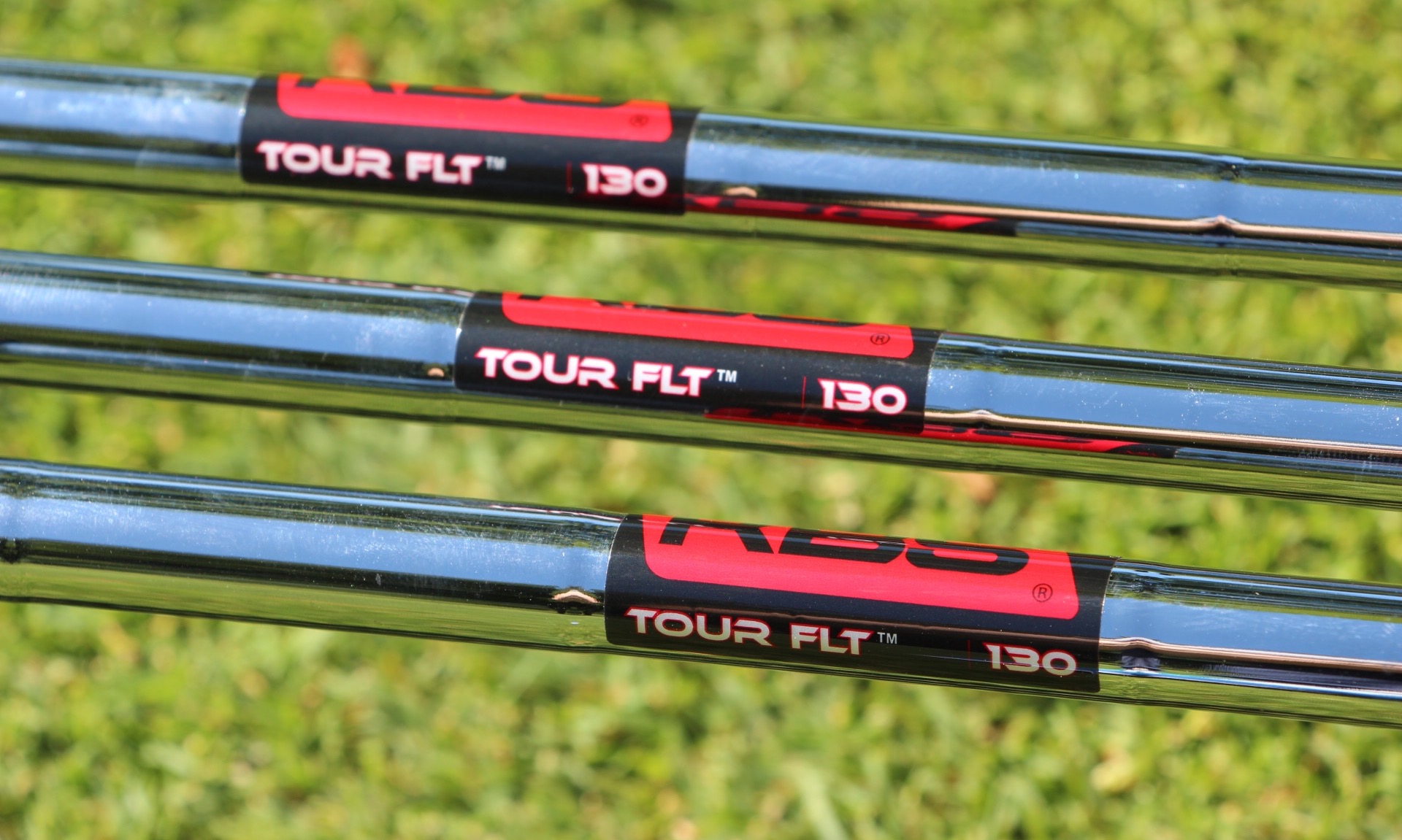
Pros: FLT shafts use a flighted design, which helps golfers launch their long irons higher and with more spin. The FLT short-iron shafts provide a more penetrating trajectory for more control.
Cons: FLT shaft flexes correspond with weight, so golfers may not be able to match their desired shaft weight with their desired flex.
Who They’re For: Golfers who need more spin or more launch from their long irons to optimize their trajectory. Everyone from beginners to PGA Tour players can use the shafts effectively, but they’ll be most popular with golfers with moderate-to-slow swing speeds, or any golfer who generates low-spin launch conditions.
Overview
Selecting the proper iron shafts is one of the most important equipment decisions golfers make. It’s an issue of quantity. Most golfers carry about 7-8 irons in their bag, so if they choose the wrong iron shaft, they’ve made the game harder than it needs to be with half or more of their clubs.
The good news is that there’s a wider selection of quality iron shafts than there has ever been, with recent growth in models that are designed to help golfers hit their iron shots higher and farther, while still maintaining PGA Tour-quality consistency and feel.
KBS is one of the leading steel shaft manufacturers, and already offered a wide variety of models prior to its newest shaft launch. Company representatives felt KBS was lacking a product for a particular segment of golfers, however, so it developed its new FLT shafts.
FLT shafts ($31.95 each) have a flighted design, which helps certain golfers optimize the performance of each iron their bag. The long irons shafts have progressively softer tip sections, which helps golfers increase their launch angle and spin rates with those clubs. For the right golfer, the design will help them hit their iron shots farther, and stop shots on the green more quickly. In the short irons, where height and spin are easier for golfers to generate, the FLT shafts are stiffer, which creates the flatter trajectory most golfers prefer with their scoring clubs. The crossover point between the higher-launching long irons and lower-launching short irons is the 7 iron.
Like all KBS shafts, FLT models have a constant weight, which means that long iron shafts and short iron shafts will be roughly the same weight through the set. Shaft weight is dependent on flex, however, as softer-flex models are lighter than stiffer-flex models. So if you’re looking for a really heavy, regular-flex shaft or a really light, extra-stiff-flex shaft, these aren’t for you.
FLT Specs
Keep in mind that KBS shafts do not have reinforced tip sections like many other iron shafts, which gives them a slightly higher balance point and can decrease swing weight by 1-2 points. I personally like the feel of KBS shafts and their slightly higher balance point, but some golfers won’t.
The Test
For this review, I tested the new FLT shafts head to head against KBS Tour shafts of the same flex and weight (130X) in 4 irons, 6 irons and pitching wedges. Each of the shafts were installed in Callaway’s Apex Pro ’16 irons, and were built to my specifications (standard grips, standard length, 1-degree strong lofts, 1-degree flat lie angles).
I performed my testing at the Launch Pad at Carl’s Golfland in Bloomfield Hills, Mich., where I hit the 4 irons, 6 irons and pitching wedges on Trackman IV with premium golf balls. I hit 3-6 solid shots with each iron, and then removed the outliers from the final data in an attempt to compare only the most similar strikes. Results were normalized.
As you can see from the data, there was a significant difference in the flight of the 4 irons with the two different shafts, but less of a difference with the 6 irons and pitching wedges.
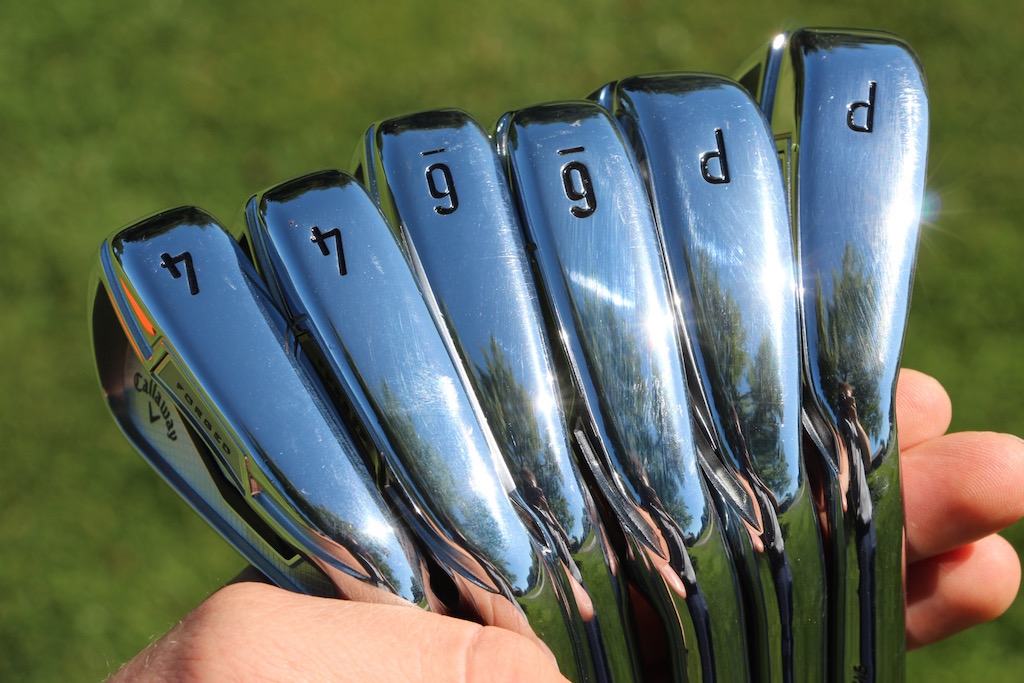
As expected, the FLT shafts caused 4 iron shots to launch higher (0.8 degrees) and with more spin (729 rpm) than the KBS Tour shafts. I’m not a low-spin player, which is one of the target audiences for this shaft, so the added launch and spin of the FLT shafts caused my 4 iron shots to fly shorter. Golfers who launch their irons too low or with too little spin, however, will likely see a distance increase when using the FLT shafts.
As I moved closer to the short end of the set, the two shafts started to perform more similarly. Theoretically, the 6 iron shots with the FLT shafts should have launched slightly higher and spun more than 6 iron shots with the KBS Tour shafts, but I actually saw a slightly lower launch angle (0.5 degrees) with the FLT. The spin was higher, though, by 211 rpm. With the pitching wedges, the results were again quite similar. The FLT launched 0.9 degrees higher, but actually spun 271 rpm less than the KBS Tour shafts.
Takeaways
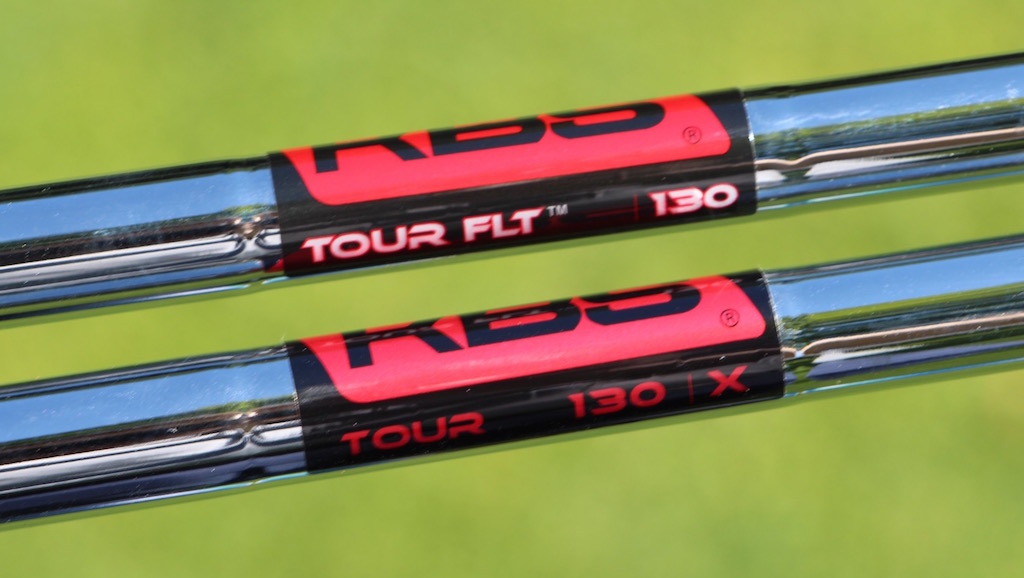
Stepping back from the numbers, I was impressed with how similar the feel was between the KBS Tour and FLT shafts. Yes, I could feel that the FLT shafts were more active in the tip with the 4 irons, but they felt nearly the same in the 6 irons. By the time I got to the pitching wedges, the two shafts were indistinguishable. The KBS Tour is considered one of the better-feeling iron shafts currently available, so KBS’ ability to replicate that feel in the FLT will be a plus for the majority of interested golfers.
Looking more broadly, trends in shaft design tends to go hand-in-hand with trends in club head design, and the FLT shafts are no exception. Equipment manufacturers continue to strengthen the lofts of their distance irons; they have to in order balance the launch equation, as their faster ball speeds create a higher launch angle and more spin.
While the improvements to iron design have allowed golfers to hit their mid and short irons farther, many golfers continue to struggle to hit their long irons high enough or consistently enough for them to be effective. And based on my testing results, it’s clear that the FLT shafts can make long irons more playable for certain golfers, and maybe even keep long irons in a golfer’s bag that might otherwise be kicked out for higher-flying hybrids or fairway woods.
As always, I recommend that golfers get properly fit for iron shafts, which means visiting a reputable club fitter in your area. So if you’re in the market for new irons or iron shafts, you can get started by going through KBS’ Online Fit System, which upon completion lists KBS-certified dealers in your area.
- LIKE100
- LEGIT12
- WOW6
- LOL6
- IDHT3
- FLOP3
- OB4
- SHANK22
-

 19th Hole2 weeks ago
19th Hole2 weeks agoDave Portnoy places monstrous outright bet for the 2024 Masters
-

 19th Hole2 weeks ago
19th Hole2 weeks agoTiger Woods arrives at 2024 Masters equipped with a putter that may surprise you
-

 19th Hole2 days ago
19th Hole2 days ago‘Absolutely crazy’ – Major champ lays into Patrick Cantlay over his decision on final hole of RBC Heritage
-

 19th Hole2 days ago
19th Hole2 days agoJustin Thomas on the equipment choice of Scottie Scheffler that he thinks is ‘weird’
-

 19th Hole3 weeks ago
19th Hole3 weeks agoReport: Tiger Woods has ‘eliminated sex’ in preparation for the 2024 Masters
-

 19th Hole1 week ago
19th Hole1 week agoTwo star names reportedly blanked Jon Rahm all week at the Masters
-

 19th Hole1 week ago
19th Hole1 week agoReport: LIV Golf identifies latest star name they hope to sign to breakaway tour
-

 19th Hole1 week ago
19th Hole1 week agoNeal Shipley presser ends in awkward fashion after reporter claims Tiger handed him note on 8th fairway

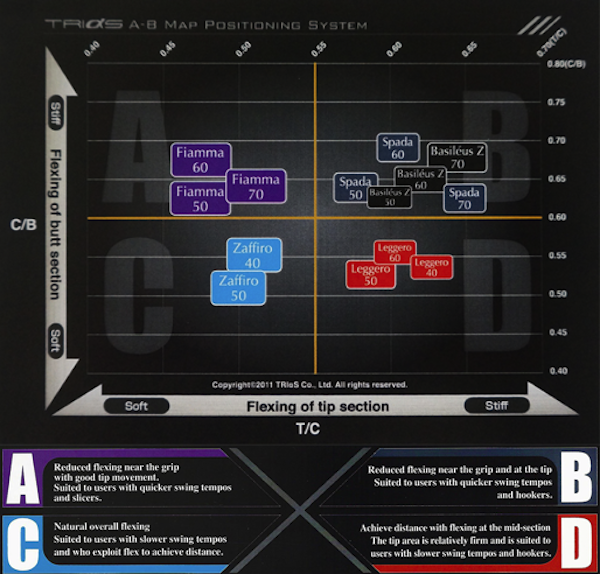
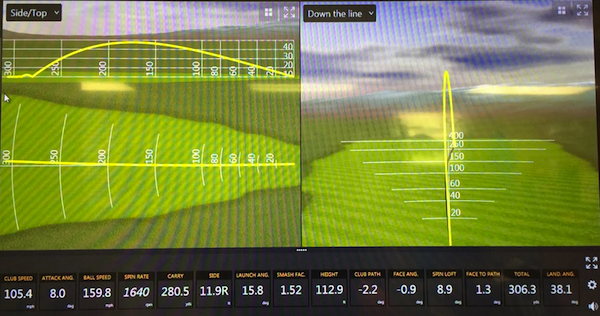
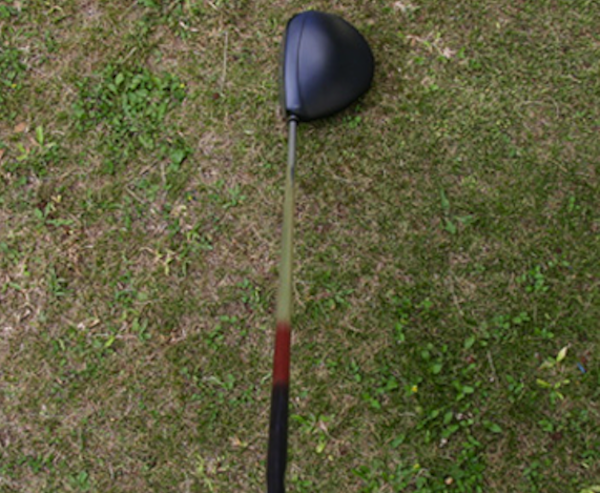








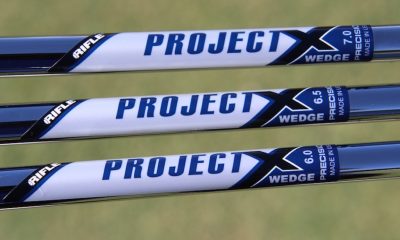

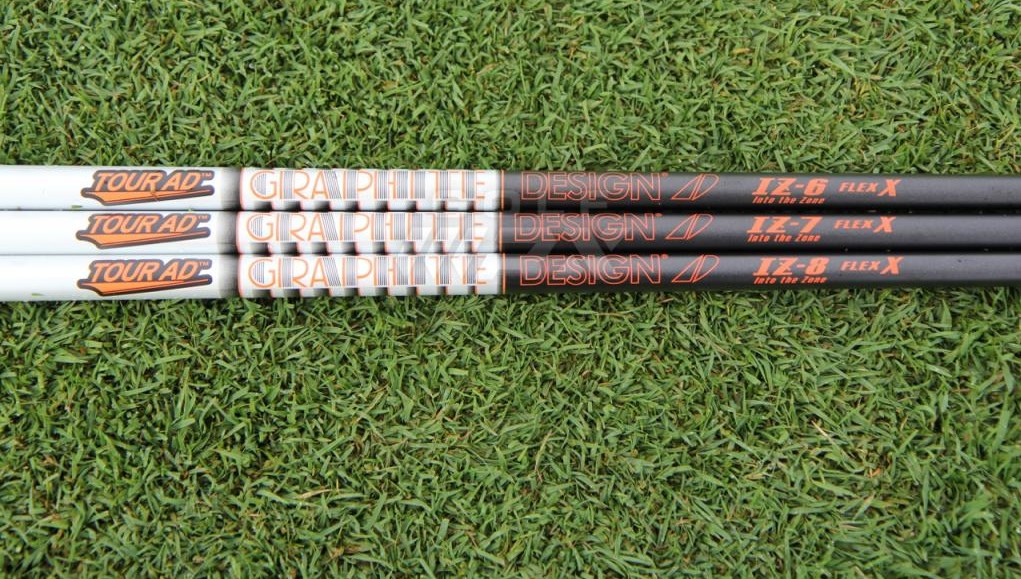
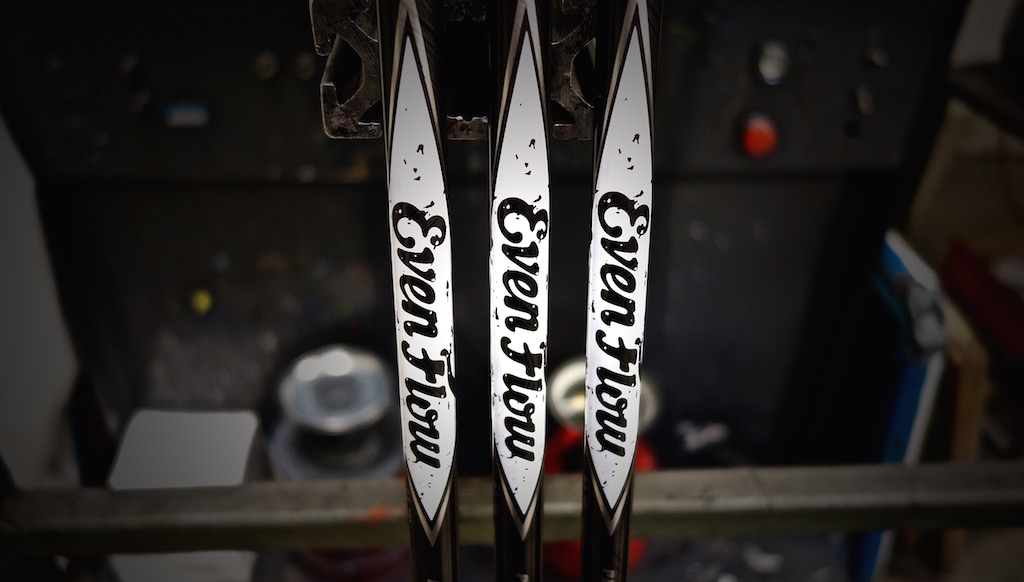
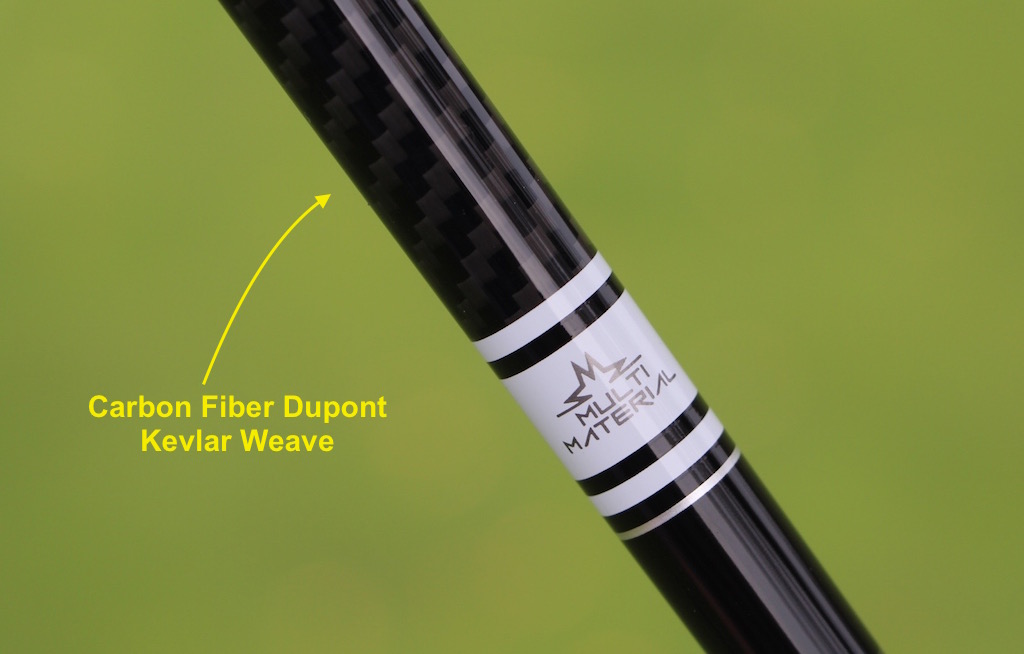
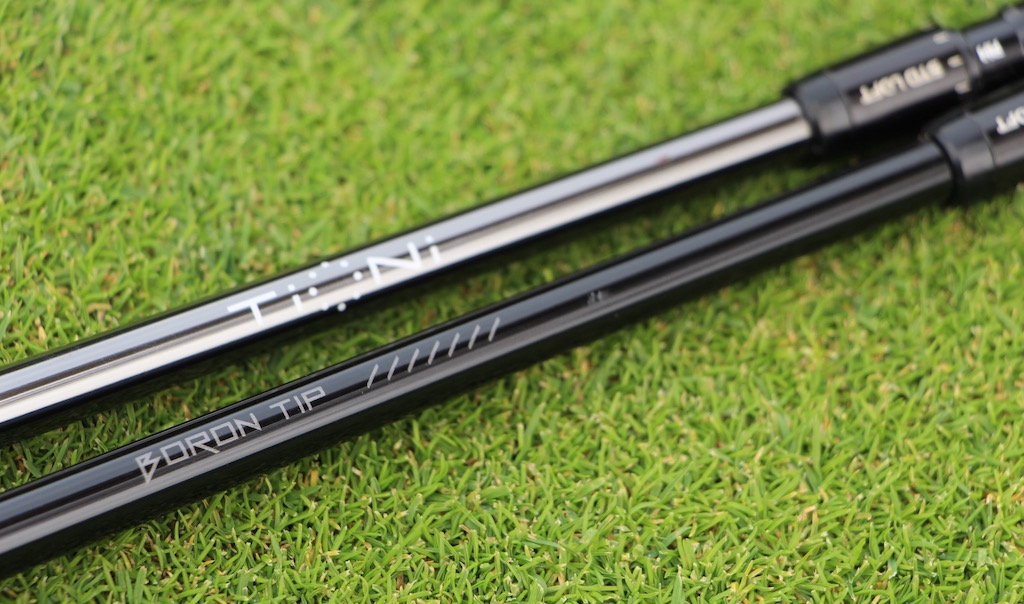
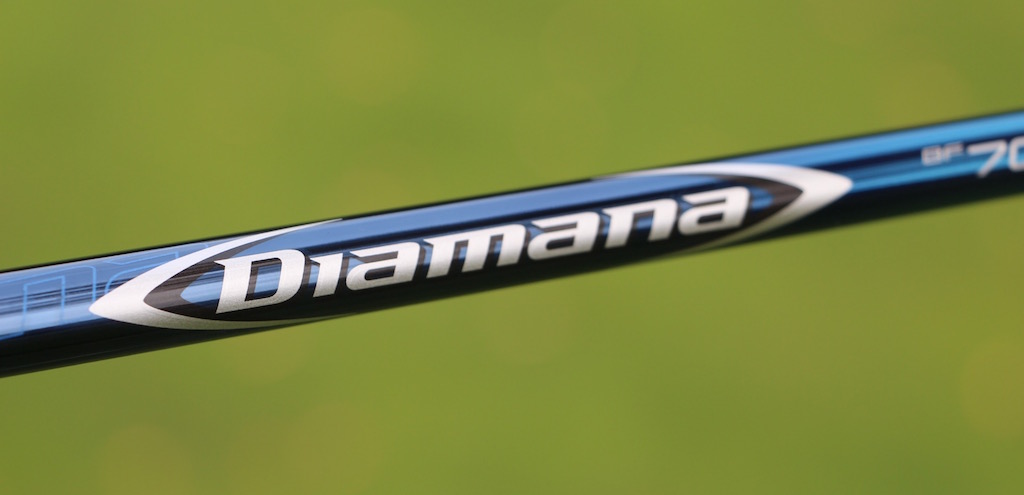
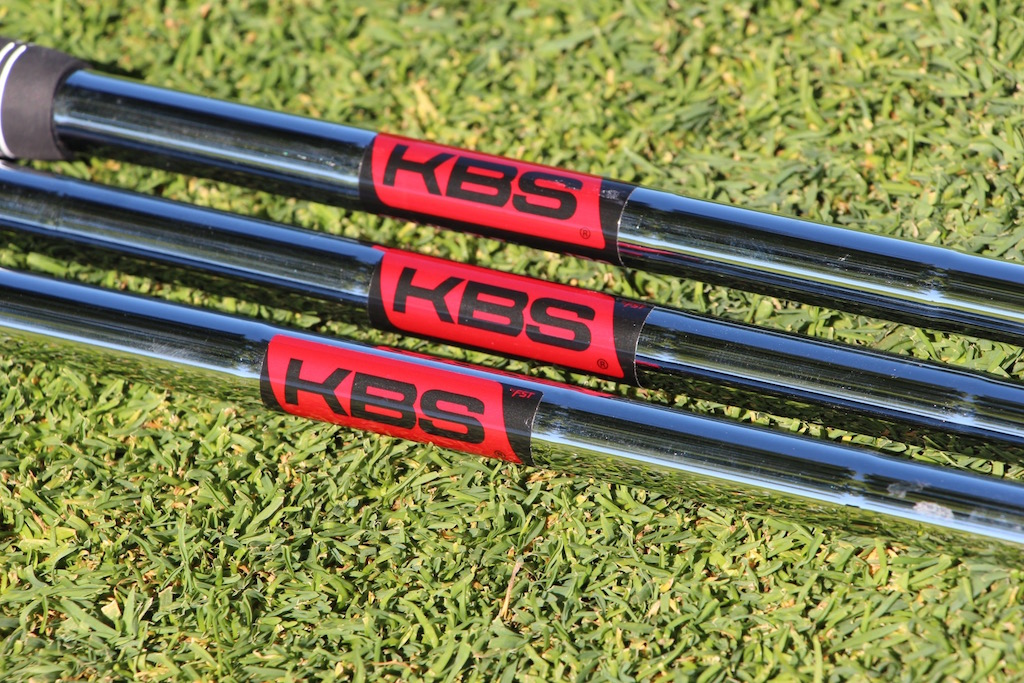

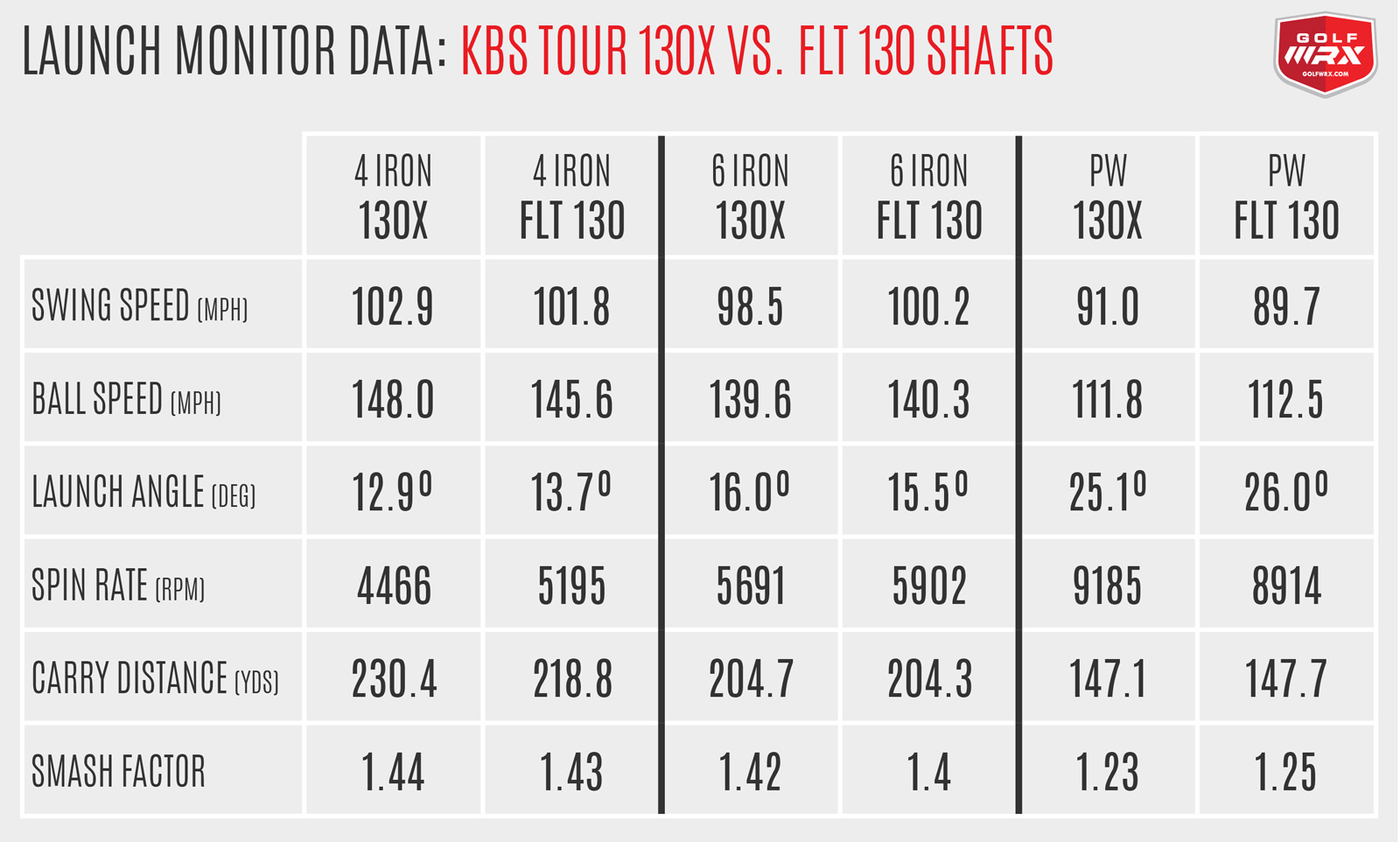












Dave
Jul 20, 2014 at 4:06 pm
First you say it’s for a quick compact swing, then you say it’s for a smooth compact swing. Which is it?
Quick tempo or smooth tempo
MRV
Jul 20, 2014 at 2:09 am
I would kill for these spin numbers.
SB
Dec 18, 2014 at 8:21 am
If he spins the ball at 1600 rpm with only a 15 degree launch, that ball will not stay in the air. 99% of people need an AVERAGE spin rate around 2300-2400. So on their low on the face heel shot it will spin up to 2800-2900 and on the high face toe shots, their spin will drop to 1900-2000 rpm.
At a 15 degree launch you need 2000 rpm to maximize ball flight.
Pingback: Review: Basileus Fiamma shaft | Spacetimeandi.com
paul
Jul 19, 2014 at 2:13 pm
After reading this I think I will try a shaft from Arthur engineering instead… Similar results for $80 or less.
Joe Golfer
Jul 25, 2014 at 2:05 am
Good idea, Paul.
Robin Arthur designed the Grafalloy ProLite 35, the original, which was one of the most used shafts on the pro tour for ages.
That was way back when the really expensive shafts cost $50.
Arthur still sells his shafts via Golfworks.com component supply under the XCALIBER brand name.
This Basleus Fiamma shaft might be fantasic, but at $473 only guys like Donald Trump would be purchasing it.